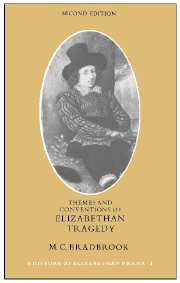6 - CHRISTOPHER MARLOWE
Published online by Cambridge University Press: 08 January 2010
Summary
The attempt to define the conventions of a particular dramatist is more difficult than to define those of a period. They will depend on the limitations of his interests and sensibility, which are disputable qualities: they will also involve a modification of the more general conventions which have been already considered. In the work of the greater dramatists the formulae which Chettle, Goffe or Daborne passively supported are seen to be something more than literary laziness. The degree in which the greater writers relied upon general conventions initially increases with the development of the drama. Marlowe had the least to rely upon: he found dramatic forms, like dramatic blank verse, stiff and inflexible; the history of his development is one of growing plasticity. He was affected by his age chiefly in matters of presentation.
The two parts of Tamburlaine, his earliest surviving work, illustrate a temporary equilibrium of personal and general conventions and its breakdown through Marlowe's own development. It is generally conceded that 1 Tamburlaine has a unity of the parts with the whole which 2 Tamburlaine does not possess, though Helen Gardner makes a plea for Part 2.
The unity of Part I is supplied by Tamburlaine himself. He is hardly thought of as a man, though it is not in Part I that he is most frequently equated with a god or a devil.
- Type
- Chapter
- Information
- Themes and Conventions of Elizabethan Tragedy , pp. 131 - 157Publisher: Cambridge University PressPrint publication year: 1980

